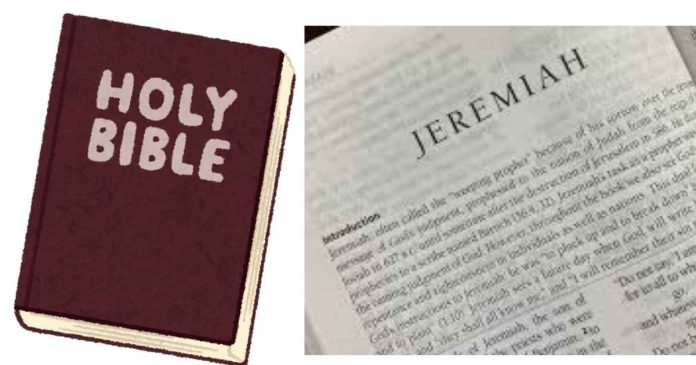The book of Jeremiah is a complex work, written over a significant period during a turbulent time in the history of the Kingdom of Judah. The prophet Jeremiah’s ministry spanned over 40 years, from around 627 BCE to the early years of the Babylonian exile in the 580s BCE. Here’s a more detailed breakdown:
1. Historical Context:
- Jeremiah’s Prophetic Ministry: Jeremiah began his prophetic work around 627 BCE during the reign of King Josiah of Judah. His ministry continued through the reigns of Josiah’s successors, Jehoahaz, Jehoiakim, and Zedekiah, and ended around the time of the fall of Jerusalem in 586 BCE.
- Fall of Jerusalem: The book reflects the dramatic political and spiritual decline of Judah, culminating in the Babylonian siege and the destruction of Jerusalem in 586 BCE. This period of Babylonian dominance began with the Battle of Carchemish (605 BCE), after which Babylon became the dominant power in the region, and eventually Judah was taken into exile.
2. The Writing and Compilation of the Book:
- Jeremiah’s Role as a Prophet: Jeremiah was not just a prophet but also an individual with personal experiences and struggles. The book reflects both his prophetic words and his personal lamentations. He was often opposed by the political and religious leaders of Judah for delivering messages of judgment and destruction.
- Baruch, the Scribe: The book of Jeremiah is traditionally associated with Baruch, Jeremiah’s scribe. According to Jeremiah 36, Baruch wrote down Jeremiah’s prophecies, and even read them in public on his behalf. Baruch is often credited with compiling and preserving the prophecies that would later become the book of Jeremiah.
3. Phases of Writing:
- Early Years (627–609 BCE): Early prophecies primarily under the reign of King Josiah, a reforming king. During this time, Jeremiah’s messages were more about reform and repentance, especially following the discovery of the book of the law during renovations of the temple (2 Kings 22:8-13). The prophecies from this time might have been written in the form of sermons or individual messages.
- Late 7th Century BCE (609–597 BCE): After Josiah’s death in 609 BCE, the nation began to decline under successive kings. During this period, Jeremiah’s prophecies turned more urgent and focused on the impending judgment of Judah. His message increasingly became about impending disaster and exile, warning of Babylon’s rise as the instrument of God’s judgment.
- 597–586 BCE (Exile Begins): After the first deportation of Judah in 597 BCE, Jeremiah continued to prophesy about the coming destruction of Jerusalem. The events of the siege and the final fall of Jerusalem in 586 BCE are reflected in the later chapters of the book.
- Final Compilation (Post-586 BCE): It is likely that the book was finalized and compiled after the fall of Jerusalem. This final edition would include the reflections on the exile, including the hope for restoration, and prophecies concerning the future of the nation and the nations around Judah.
4. Literary Structure:
- Prophecies and Oracles: The book contains a mixture of prophetic oracles, biographical elements, and historical narratives. The first part is largely made up of oracles (direct proclamations from God), calling for repentance, warning of the destruction, and calling out idolatry.
- Narrative Sections: The book also includes narrative sections that describe Jeremiah’s life and interactions with kings, priests, and the people. These sections are important for understanding his personal struggles, opposition, and the political tensions of his time.
- The Book of Consolation (Chapters 30–33): This is a section of hope, often called the “Book of Consolation,” that prophesies the eventual restoration of Judah and the coming of a new covenant. This part of the book was likely written in the context of the Babylonian exile or shortly afterward, offering hope to the exiled community.
5. Dating and the Influence of Historical Events:
- 609–586 BCE: The major events shaping Jeremiah’s prophecies include the fall of the Assyrian Empire and the rise of Babylon as a superpower, the repeated invasions of Judah by Babylon (including the siege of Jerusalem), and the final destruction of the temple.
- The Babylonian Exile: The book reflects both the immediacy of judgment on Judah and the future hope for the Jewish people after exile, indicating that parts of the book were written or compiled after the fall of Jerusalem and the beginning of the exile, around 586 BCE.
6. Thematic Structure:
- Judgment and Destruction: The primary theme in the early sections is the judgment of Judah due to its unfaithfulness, idolatry, and social injustice.
- Hope for Restoration: Despite the judgment, there is a consistent thread of hope, especially in the later chapters, with promises of restoration, a new covenant, and a return from exile.
- Universal Judgment: In addition to prophecies about Judah, Jeremiah also prophesies against foreign nations (such as Egypt, Moab, Ammon, and Babylon), showcasing the universal nature of God’s judgment.
Conclusion:
In summary, the book of Jeremiah was written over a period of decades, with contributions likely continuing until shortly after the fall of Jerusalem in 586 BCE. The book combines oracles, biographical accounts, and narrative history, and it reflects the upheaval of the time, including Judah’s downfall and eventual hope for restoration. Jeremiah’s scribe, Baruch, played a significant role in preserving and compiling these prophecies, resulting in the book we have today.


